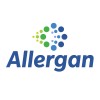
Ab Interno Gelatin Stent With Mitomycin C Using Targeted Supra-tenon's Placement
GlaucomaThe Xen-45 gelatin microstent is a novel, bleb-forming microinvasive glaucoma surgery (MIGS). Despite demonstrating similar efficacy and safety to trabeculectomy (traditional surgery), the Xen-45 gelatin microstent continues to suffer from occasional surgical failure due to fibrosis of the filtering bleb, and obstruction of the stent. During surgery, placement in a surgery known as supra-tenon's space is believed to maximize aqueous outflow, while preventing obstruction, limiting fibrosis of the bleb, and promoting long-term patency. Despite the theoretical merits, long-term data of outcomes after targeted supra-tenon's placement is needed to fully assess its potential in improving Xen-45 microstent outcomes.

Preservative-free Fixed-dose Combination of Tafluprost 0.0015% / Timolol 0.5% in Patients With Open-angle...
Ocular Surface DiseasePrimary Open Angle GlaucomaThe primary objective of this study is to assess the effectiveness of Tafluprost / Timolol in controlling ocular hypertension, as measured by mean change in intra-ocular pressure (IOP) from baseline to after 6 months of treatment from initiation, in patients with open angle glaucoma (OAG) or ocular hypertension (OHT), who do not respond sufficiently to initial topical treatment, in routine clinical practice.

Evaluation of the Efficacy of Selecta Laser Trabeculoplasty in Patients Undergoing Filtering Surgery...
GlaucomaGlaucoma is a common, potentially blinding pathology, threatening patients' autonomy and quality of life. The main aim of treatment is to lower intraocular pressure (IOP) in order to slow nerve fiber loss as much as possible, leading to alterations in the visual field and even reduced visual acuity. To achieve this drop in pressure, there are, of course, hypotonizing eye drops, trabeculoplasty with Laser Selecta (SLT) or filtering surgery (trabeculectomy, deep non-perforating sclerectomy, insertion of drainage devices). Laser Selecta specifically targets pigmented trabecular meshwork cells without damaging adjacent structures, and is thought to act via three mechanisms: distension of Schlemm's canal, reorganization of trabecular meshwork cells and stimulation of extracellular matrix production. Its efficacy has been demonstrated in several studies, with a 20-30% reduction in intraocular pressure in patients who have never undergone surgery. Few studies have investigated the efficacy of SLT in patients who have already undergone filtering surgery. The aim of this study is therefore to determine the efficacy of SLT in previously operated patients whose intraocular pressure remains insufficiently controlled.

A Study of Simbrinza™ Therapy in Patients With Open-Angle Glaucoma or Ocular Hypertension
Open-Angle GlaucomaOcular HypertensionThis study is a retrospective chart review to assess the tolerability and efficacy of treatment with Simbrinza™ used for patients with Open-Angle Glaucoma or Ocular Hypertension.

A Study of Patients With Primary Open Angle Glaucoma or Ocular Hypertension Switched to Lumigan®...
GlaucomaPrimary Open Angle1 moreThe study will evaluate patients diagnosed with primary open angle glaucoma or ocular hypertension who are switched to Lumigan® UD monotherapy for medical reasons in accordance with physician standard clinical practice. All treatment decisions lie with the physician.

GANfort® in Patients With Primary Open Angle Glaucoma or Ocular Hypertension Who Are Insufficiently...
GlaucomaOpen-Angle1 moreThis is an observational study of patients diagnosed with Primary Open Angle Glaucoma (POAG) or Ocular Hypertension (OHT) who are insufficiently responsive to monotherapy and who are prescribed GANfort® (fixed combination of 0.3 mg bimatoprost and 5 mg timolol) by their physician.

Glaukos® iStent® Trabecular Micro-Bypass Stent System In Conjunction With Cataract Surgery Postmarket...
Primary Open-angle GlaucomaThe purpose of this study is to observe the safety of the Glaukos® iStent® Trabecular Micro-Bypass Stent Model GTS100 in conjunction with cataract surgery in subjects with mild to moderate open-angle glaucoma.

Ocular Blood Flow in Glaucoma Patients - the Leuven Eye Study
Open Angle GlaucomaNormal Tension GlaucomaGlaucoma is a leading cause of blindness worldwide, whose treatment - intraocular pressure lowering - is only partially effective in preventing disease progression. Accordingly, other variables, such as ocular blood flow-related factors, have been implicated in disease pathogenesis. However, most findings involving vascular variables come from partial, small-scale studies. Furthermore, recent technological advances have identified a number of ocular blood flow variables that have yet to be tested in large scale trials. Therefore, a study that specifically aims at uncovering the role of vascular aspects in glaucoma is needed. For this purpose, a cross-sectional, observational case-control study will be conducted in the University Hospitals Leuven. This will be the largest-yet study on the subject, involving more than 750 patients. This will allow the creation of a specific cohort of patients where the vascular aspects are thought to be particularly important (low-tension glaucoma). It will use the largest combination yet of vascular-related measuring techniques (dynamic contour tonometry, optic coherent tomography, colour Doppler imaging and retinal oximetry)

RESEARCH PROTOCOL: Glaucoma Treatment Adherence and Persistence
Primary Open Angle GlaucomaThe investigators are studying motivational interviewing (MI). MI is a counseling method to help people adopt healthy behaviors. The investigators will test whether MI improves patients' accurate use of glaucoma eye drops. The investigators will train eye clinic staff called glaucoma educators to use MI. Up to 250 patients at 3 clinics will be recruited. All patients will receive their usual eye care. Based on chance, some patients will also be supported by a glaucoma educator. The groups will be compared on medication adherence using micro-electro-mechanical system(MEMS). MEMS are electronic bottle caps that track when a medication bottle is opened. Patients will be aware that their medication use is tracked. The groups will also be compared on treatment value, outcomes, and cost. The investigators will also collect data on variables that may predict medication adherence.

SDOCT-GMPE Software
GlaucomaThe investigators prospectively evaluate the new glaucoma premium edition (GMPE) software for spectral domain optical coherence tomography (SDOCT) and if this software is superior to the conventional one that is currently used for SDOCT.
